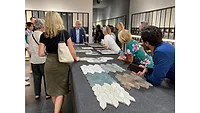Tile of Spain Passport to Creativity: A Celebration of History, Design and Innovation
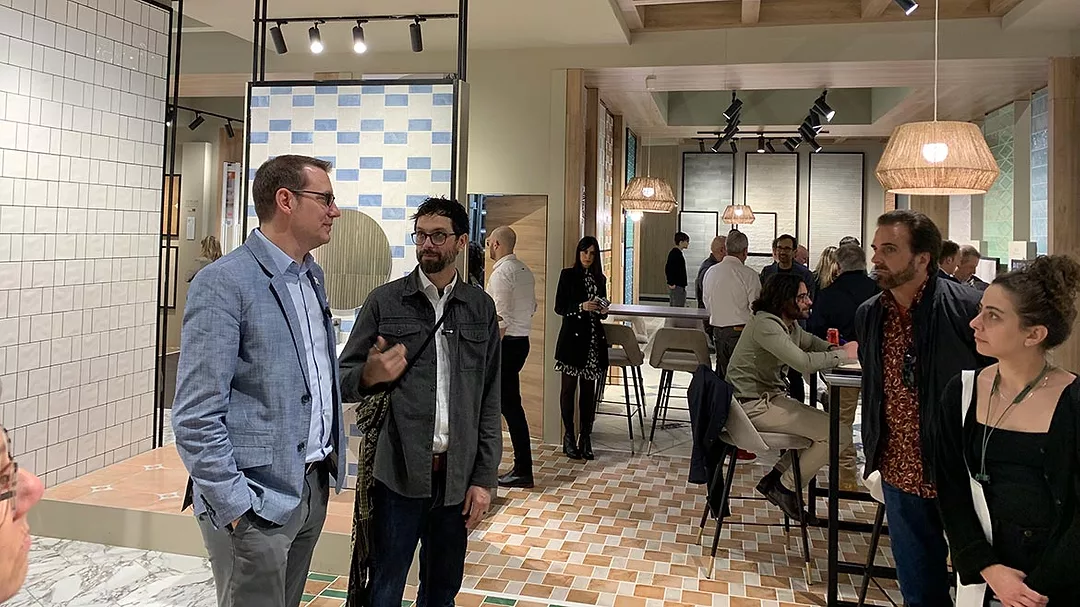
Realonda was awarded for producing the first ceramic tile collection with digitally printed glaze.
Photo: FLOOR Trends & Installation.
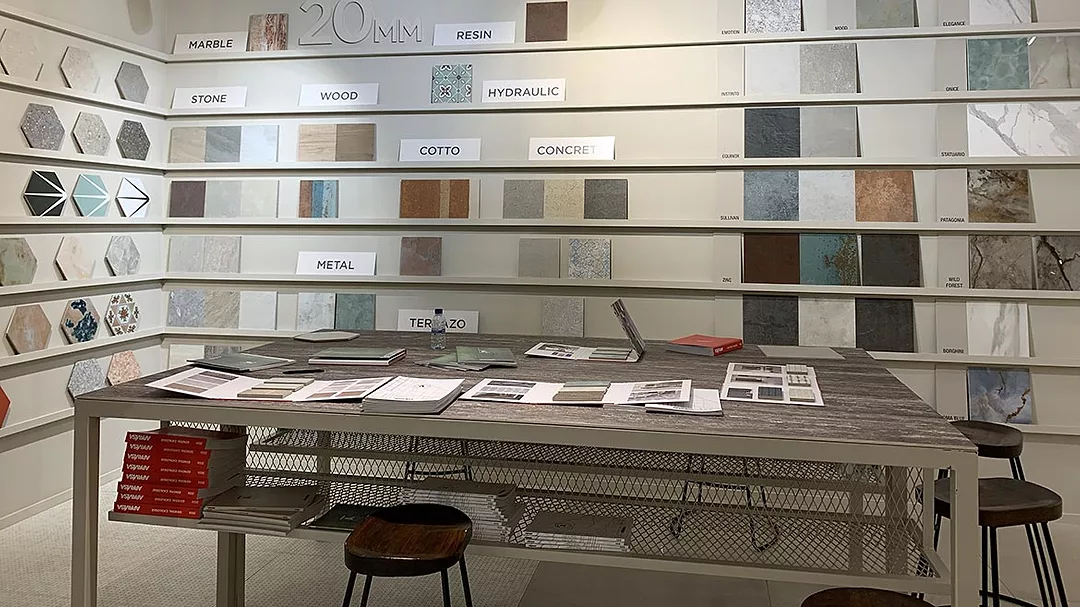
The Apavisa tile wall showcases a wide range of the tile trends—terracotta, wood, stone, concrete, patterns, muted colors—that were seen across the board at the Cevisama show.
Photo: FLOOR Trends & Installation.
The Tile of Spain Passport to Creativity Tour is the intersection of ceramic tile history, design and innovation. Each year, architects, designers, influencers, contractors and members of the press are selected to travel to Valencia, Spain by Tile of Spain USA where they study the history of tile in the Old City, visit tile factories and showrooms to better understand the tile manufacturing process and attend the Cevisama tile show to learn about the Spanish tile industry and current ceramic tile trends.
This year was truly a celebration.
Cevisama, Spain’s premier ceramic tile show, celebrated 40 years at this year’s edition with a look back at how ceramic tile design has changed since the first show held in 1983. The report, created by Lutzía Ortiz Miralles, head of ITC-AICE Home Trends Observatory and Product Design Unit, and Ana Benavente Piotte, analyst, ITC-AICE Home Trends Observatory and Product Design Unit, traced how design trends and tile technology have evolved over four decades, paving the way for current trends.
Ceramic Tile Trends: Looking Back
The ‘80s were a time of bold color, and the technical advancements revolved around glazing and manufacturing. Monochrome looks, rustic-effect tile and a sneak peek at marble-effect tile characterized this era.
Marble-effect tiles were officially introduced in the ‘90s, according to Miralles and Piotte. Opulence and luxury were in full bloom inspired by stone designs in rustic looks, natural materials including marble looks and “faux mosaic tiles that were quicker to lay.” Tile manufacturing technology took tile effects up a notch with machinery capable of producing different effects that could be overlapped to produce a wide range of designs.
According to Miralles and Piotte, the square footage in homes decreased in the 2000s, challenging interior design but lending itself to a new style—minimalism. Technological advancements during this time came in the form of the increased popularity of roller kilns with the capability to produce larger designs that appear seamless. However, inkjet technology was still being perfected to reproduce natural-look materials such as cement, stone and marble. Finishes moved from glossy to satin, and “flamboyant, ostentatious glossy shines and touches of gold” were popular.
Efforts to perfect inkjet technology took hold in the 2010s, leading to realistic wood, metal and cement designs. This technology also made it possible to create large-format designs and near-infinite tile pattern designs. Additionally, homes saw touches of industrial looks and “vintage features evocative of bygone times,” according to Miralles and Piotte.
Enter the pandemic in 2020. Our well-being moved to the top of the list and outdoor spaces became relevant and necessary. With a spotlight now on outdoor communal spaces, design shifted to products suitable for outdoor use. Inkjet technology reached a point at which differentiating between real and faux was nearly impossible when it came to natural looks. Large-format tiles lent themselves not only to the floors and walls but also to “furniture” in the form of kitchen islands, tables and shelves, and texture played a much larger role.
What’s Old is New
During the architectural tour of the Old City led by architect Adrian Torres Astaburuaga, he pointed out various structures and the historical significance of their design. It’s important to note that each time period’s design was influenced by the current goings on whether it was war, a religious movement, a shift in power, a health crisis or some other factor much in the same way trends are influenced now. Over time, as buildings, streets, sidewalks and structures were destroyed or simply neglected, newer tile that closely resembled the old tile was brought in to rebuild or repair. Walking through the Old City, it is apparent where one era ended and another began as new tiles merged with old.
One of the biggest trends in ceramic tile this year has to do with “the deep rich centuries of history in this industry, marrying it with new unbelievable technology incorporating digital augmentation of the surfaces,” said Ryan Fasan, technical consultant, Tile of Spain USA. “We're taking inspiration from some of the oldest tile that we've ever produced and we're creating it in new ways with all of this new technology at our fingertips.”
This trend toward emulating natural materials is characterized by “rough, uneven, unrefined, cracked or even burnt surfaces,” according to Miralles and Piotte. The inkjet technology that began creating the realistic wood, metal, stone and cement looks during the 2010s has carried this realism through 2020 and beyond to a place where we can now create tile that is capable of blending with its surroundings.
“I'm also seeing a lot of revivals come back,” said Fasan. “Things like crosscut and vein cut travertine, Saltillo tile and terracottas, all really raw natural things, natural woods, natural stones, and all of these coming in with new technology so that they force you to go up and touch them to see if they are real.”
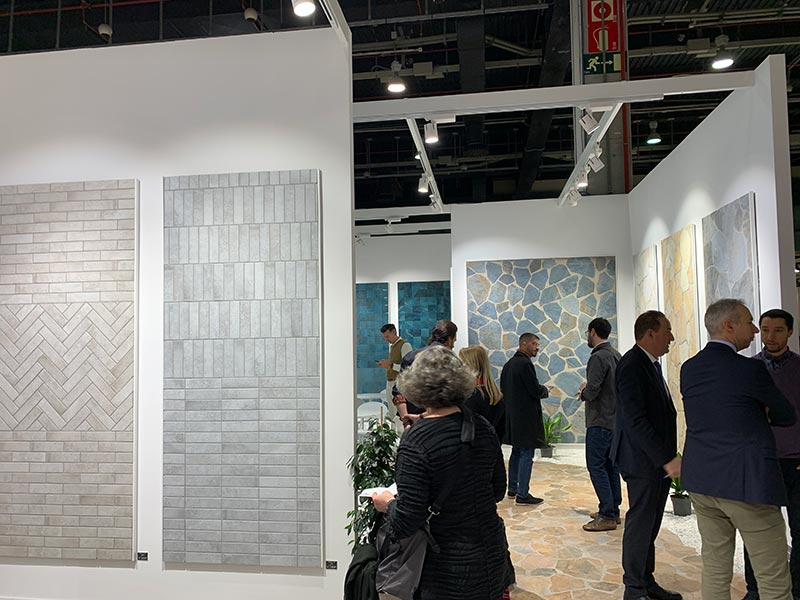
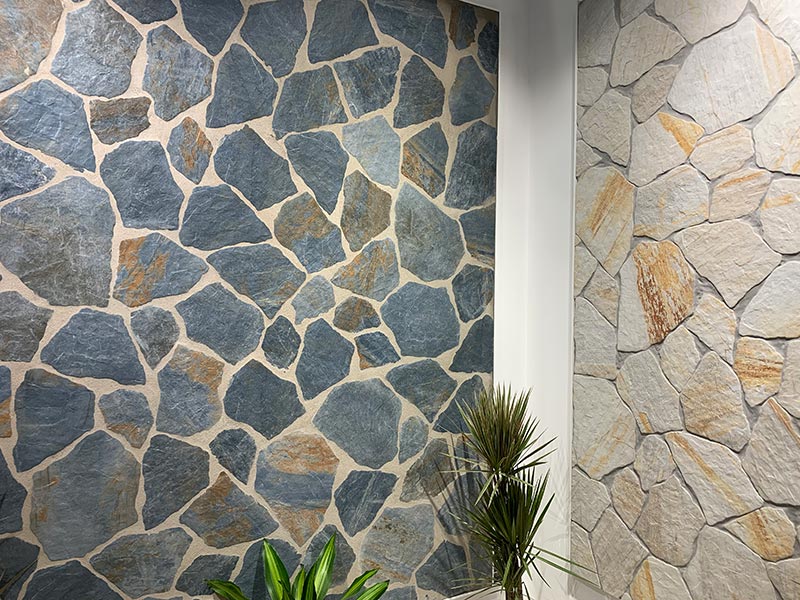
Mijares Cerlat’s Montesa stone-look tile can be used on the wall or floor and even in the driveway. It comes in six different stone styles and seven colors. The tiles are 11mm thick and possess anti-slip properties. Photos: FLOOR Trends & Installation.
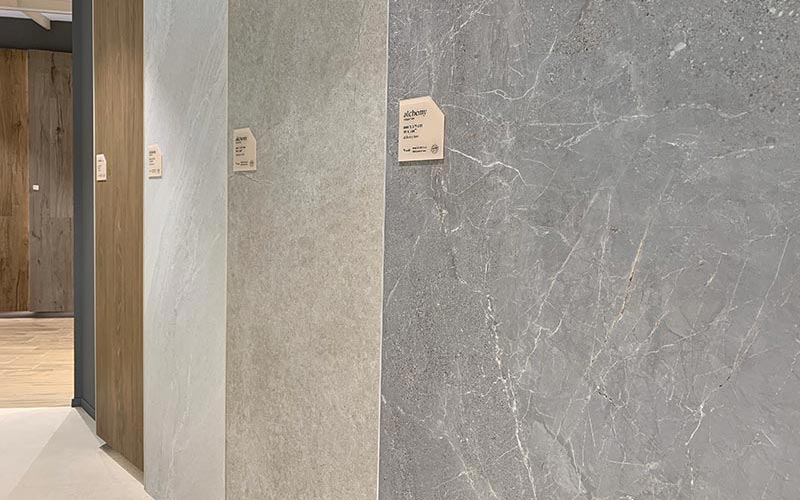
Peronda’s Alchemy collection showcases a range of natural looks from stone to cement to wood. Photo: FLOOR Trends & Installation.
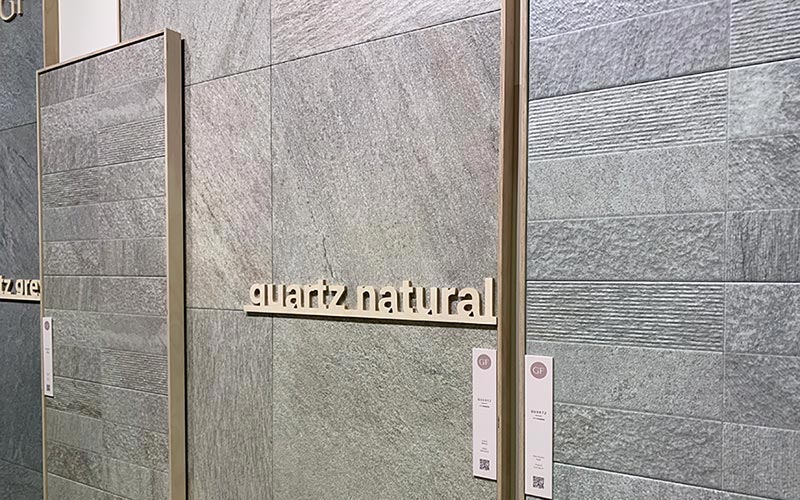
Gayafores Quartz collection in color Natural is a glazed porcelain tile that mimics the rough-hewn texture and impurities in natural stone. Photo: FLOOR Trends & Installation.
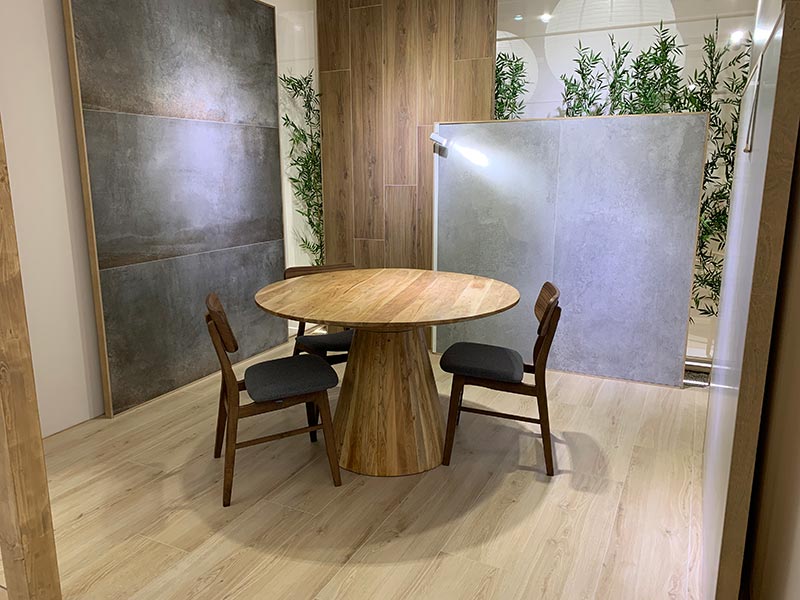
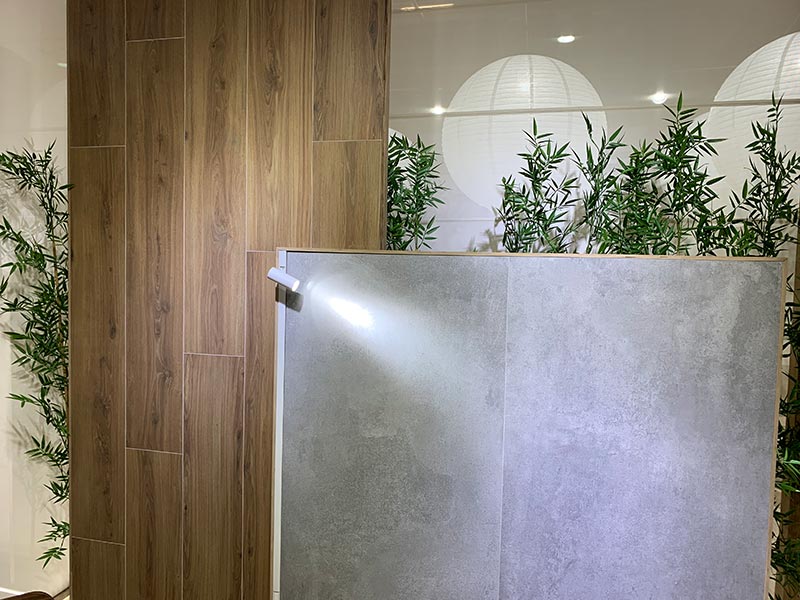
Roca Tile’s wood-look and stone-look porcelain tile take realism up a level with its digitally designed effects based on the real thing. Photos: FLOOR Trends & Installation.
Muted Colors and Subtle Patterns
At last year’s Cevisama show, vibrant color characterized every tile collection whether it was wallpaper printed looks, deep, rich monochromes, vintage designs that married color and texture, or elegant floral patterns. This year’s muted, natural colors, a return to minimalism, held an intentionality aimed at sensory appeal through the use of discreet texture. This coupled with subtle patterns influenced by nature give a nod to biophilia.
“We're seeing a lot of blue at the show this year, almost each and every booth and every manufacturer is producing tile in some shade of blue, whether it's a rich deep navy or a vibrant teal,” said Catherine Hoy, senior account executive, Frank Advertising, the public relations and marketing firm representing Tile of Spain USA. “We're seeing it across full collections or even as decorative accents on walls and floors, on backsplashes. The blue, it's just a really serene and zen color. It creates a very comfortable atmosphere.”
Green was equally as prominent with variations ranging from pale sage to watery greens to bright yellow green. Much like blue, the green spectrum traveled from the floor up the wall and was utilized in patterns befitting a backsplash or accent wall. Different variations of green were coupled to create a calming environment.
Terracotta or “Cotto” and Santillo looks swept the show floor at Cevisama, playing off of the Pantone Color of the Year—Peach Fuzz. “The varied color palette of "terracotta" includes; the hues of burnt orange, rust, persimmon, salmon, coral, tangerine and peach,” said Douglas DeBoer, owner, Rebel Design+Group. “These colors whether tiles, paints or textiles (or any combination thereof) are associated with a warm, comfortable, homey feel and are a great use for anchoring a room. The muted tones are also great for distributing warm light within a space as well as blending away any cleaning imperfections.”
Printing technology has come a long way since the ‘80s. Realonda was awarded for producing the first collection with digitally printed glaze. As a new design feature, ceramic tile can now be printed in an infinite combination of glaze looks (or lack thereof) across the body of the tile in any pattern on any tile shape or size; the possiblities are endless.
“Now, we can manipulate the surface of the tile,” said Fasan. “We can change from glossy to matte; we can carve and even add texture into the surface of tile so that some of our most classic styles of ceramics are reproduced in new ways with a new life for new generations.”
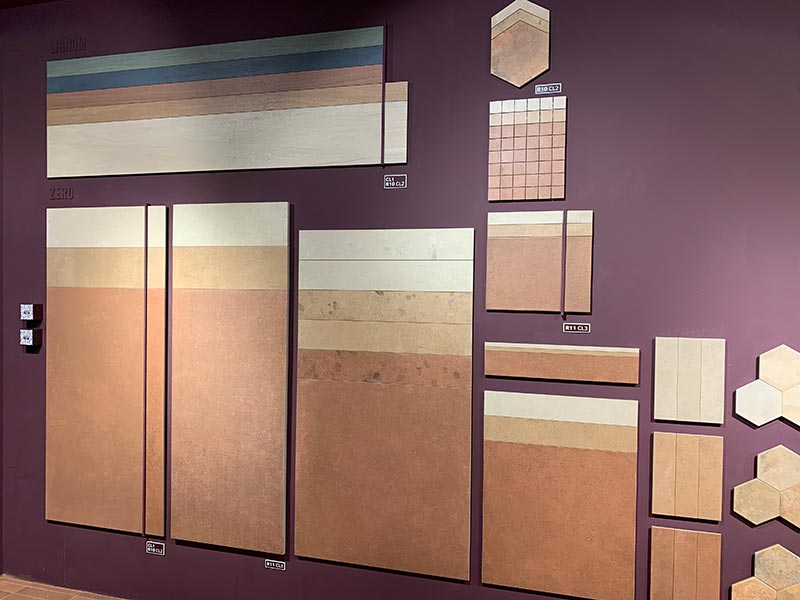
Arcana’s Parallax collection is made up of four colors—White, Sand, Shade and Reddish. This subtle palette blends warm hues closely resembling those found in terracotta. Photo: FLOOR Trends & Installation.
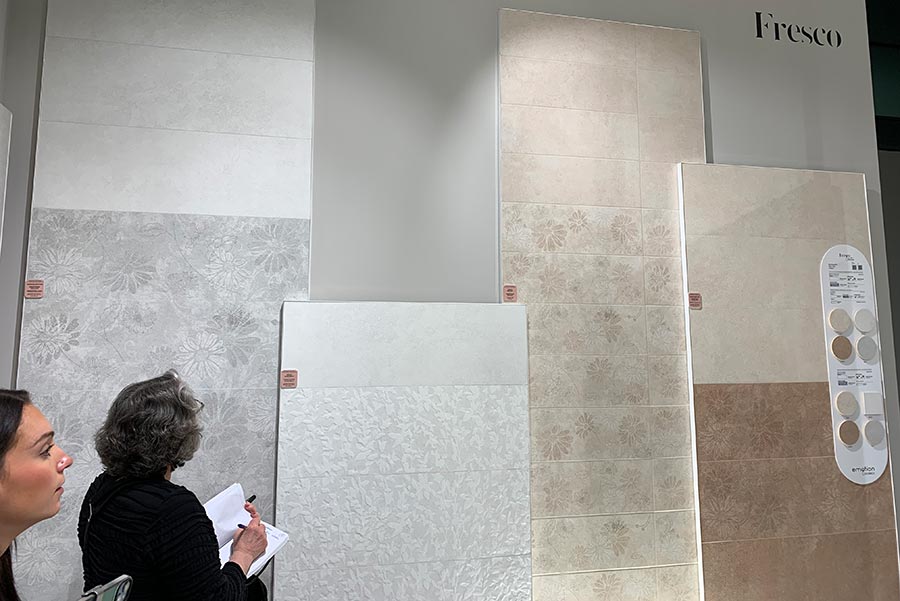
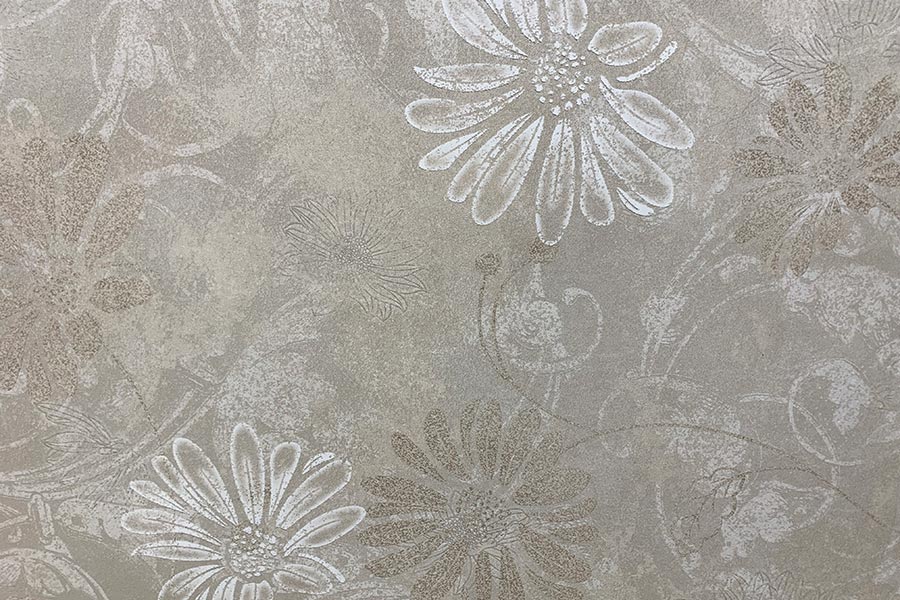
Emotion Ceramics’ Fresco collection combines fine textures with natural elements like stone and sand colorations and layers them with a subtle floral pattern. Photos: FLOOR Trends & Installation.
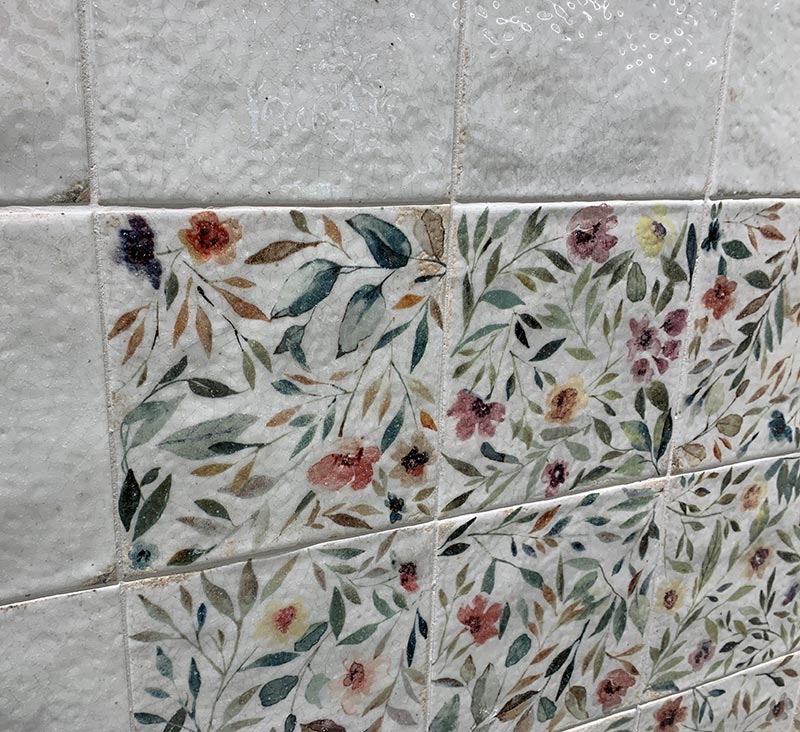
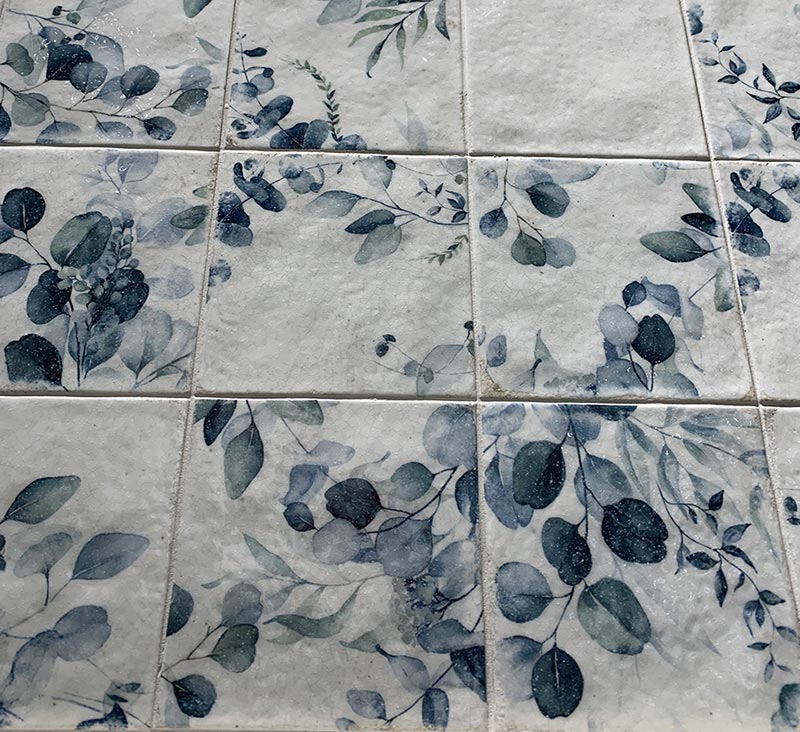
Harmony’s Mayolica collection features one neutral field tile and two patterns inspired by nature with touches of blue, green and pink. Photos: FLOOR Trends & Installation.
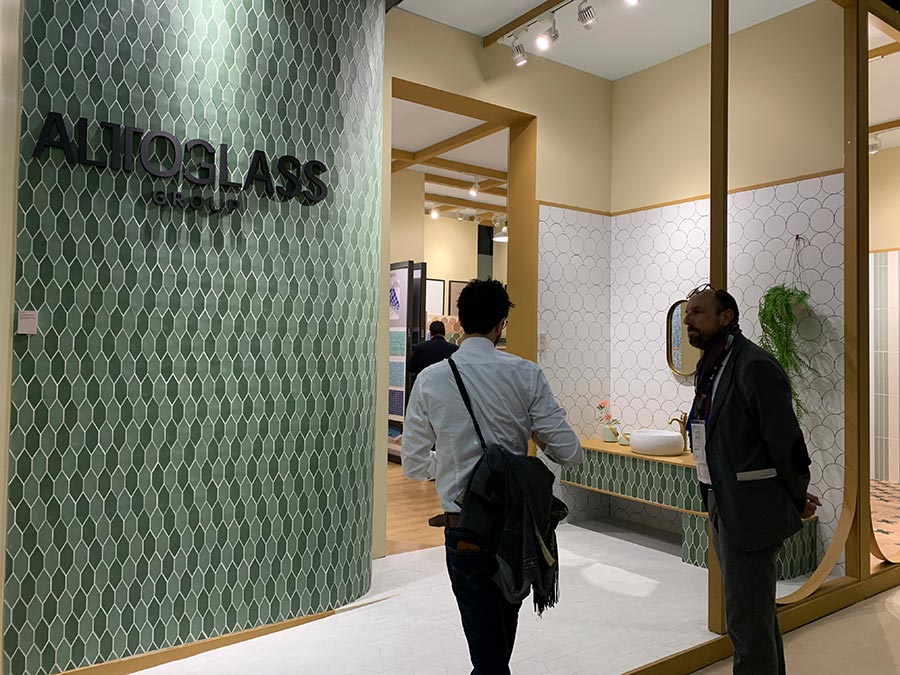

Alttoglass’ Japandi collection couples Moss Green and Seaweed in this accent wall and table and grounds them with a white shaped tile from the Japandi and Argile collections. Alttoglass blends watery blues and greens and muted terracotta hues in this vignette. Photos: FLOOR Trends & Installation.
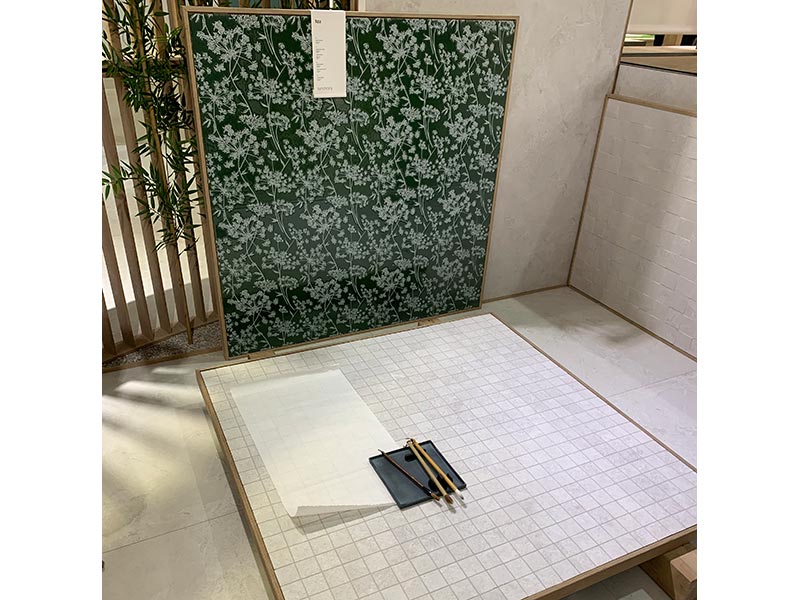
The Synchrony collection by Roca melds a deep green with a floral pattern to create a mood of serenity. Photo: FLOOR Trends & Installation.
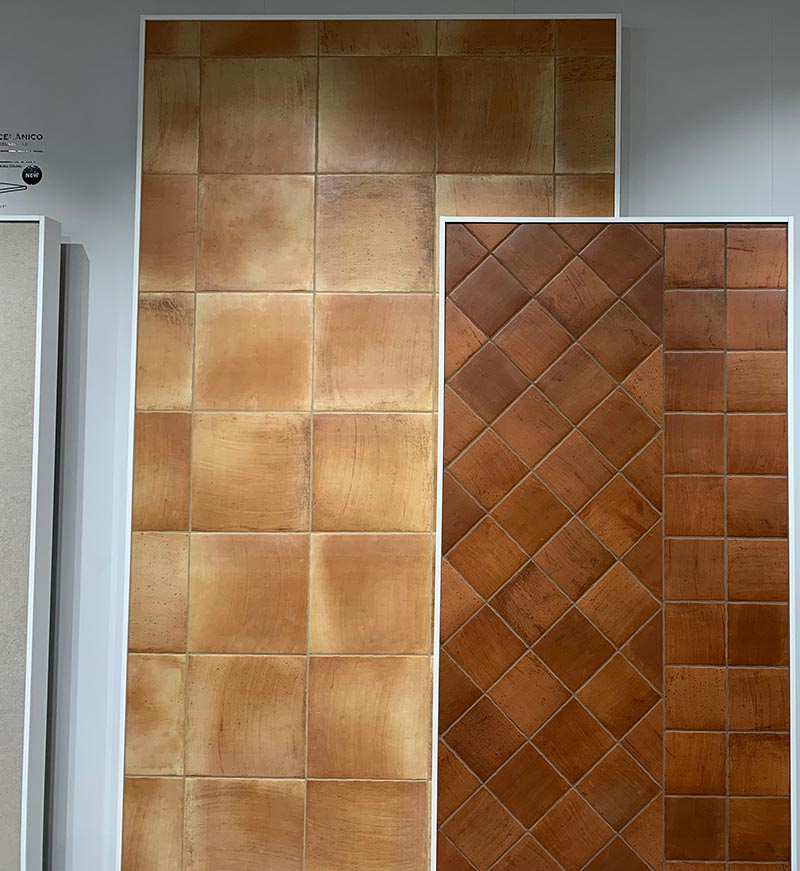
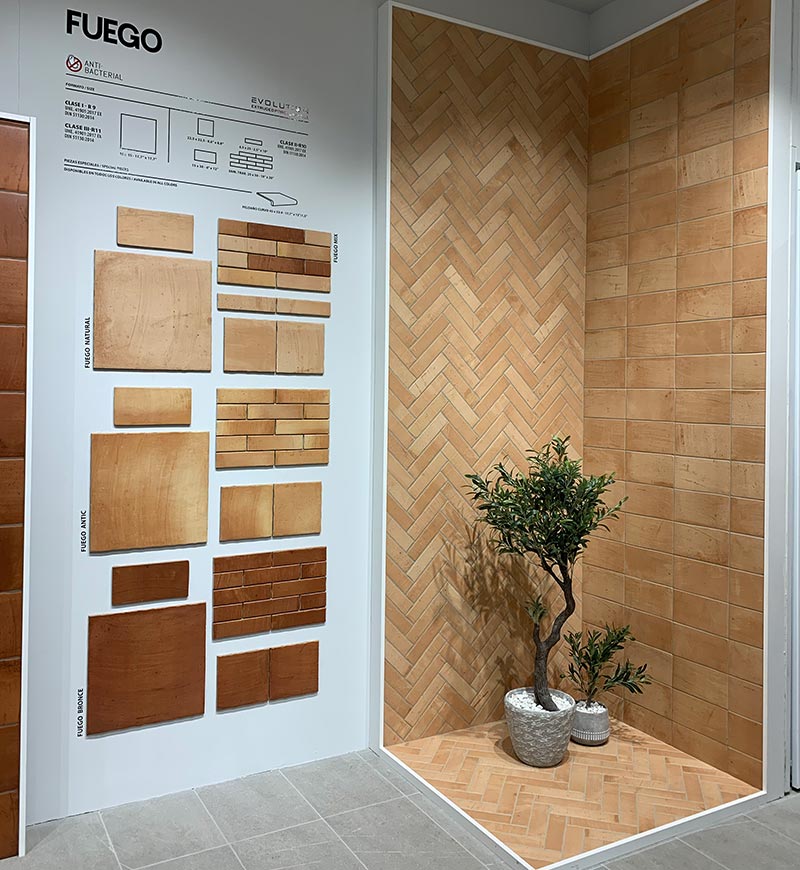
Natucer’s Fuego collection covers floor and wall in a variety of terracotta and Saltillo looks. Photos: FLOOR Trends & Installation. Photos: FLOOR Trends & Installation.
Looking for a reprint of this article?
From high-res PDFs to custom plaques, order your copy today!



